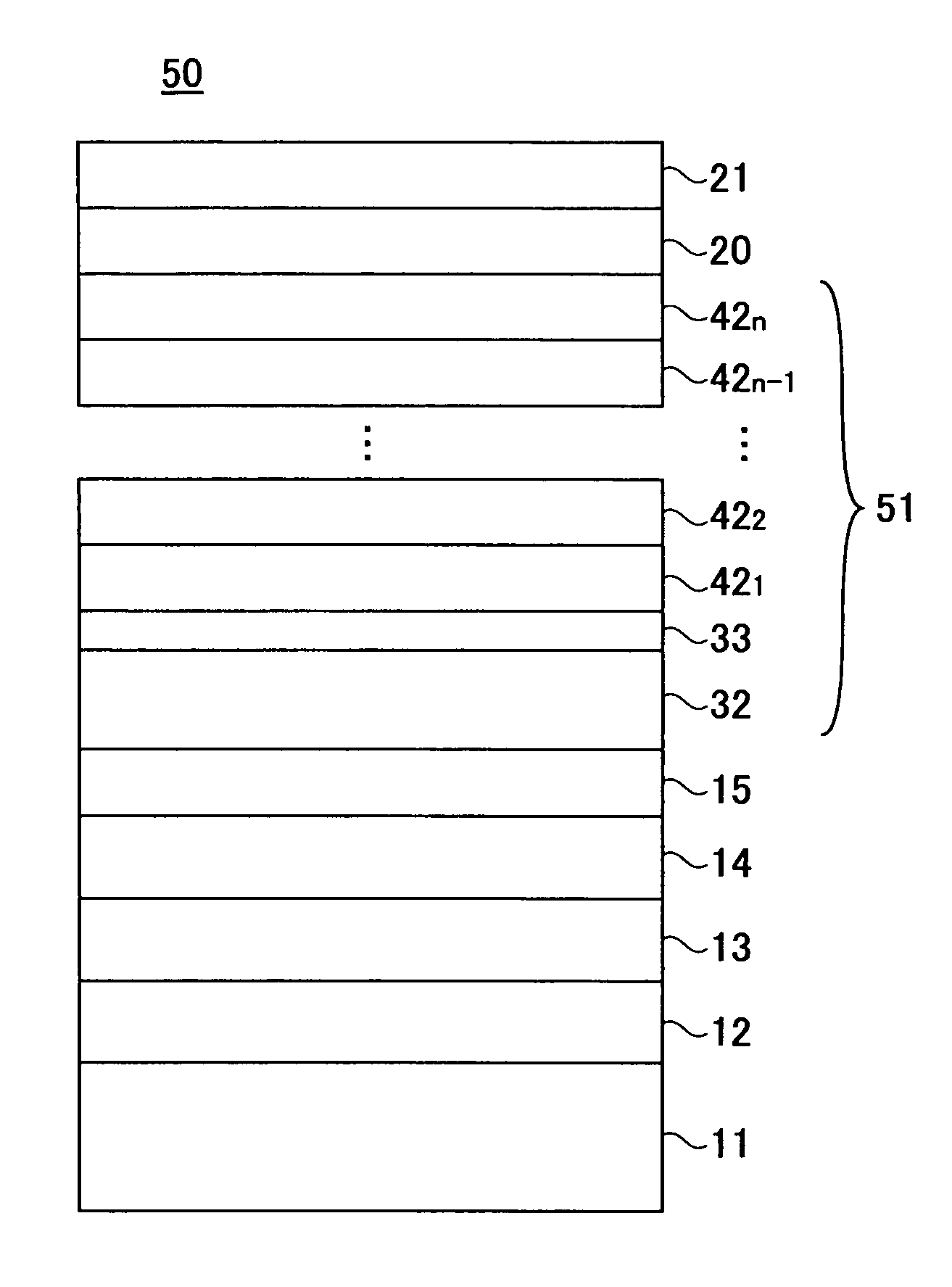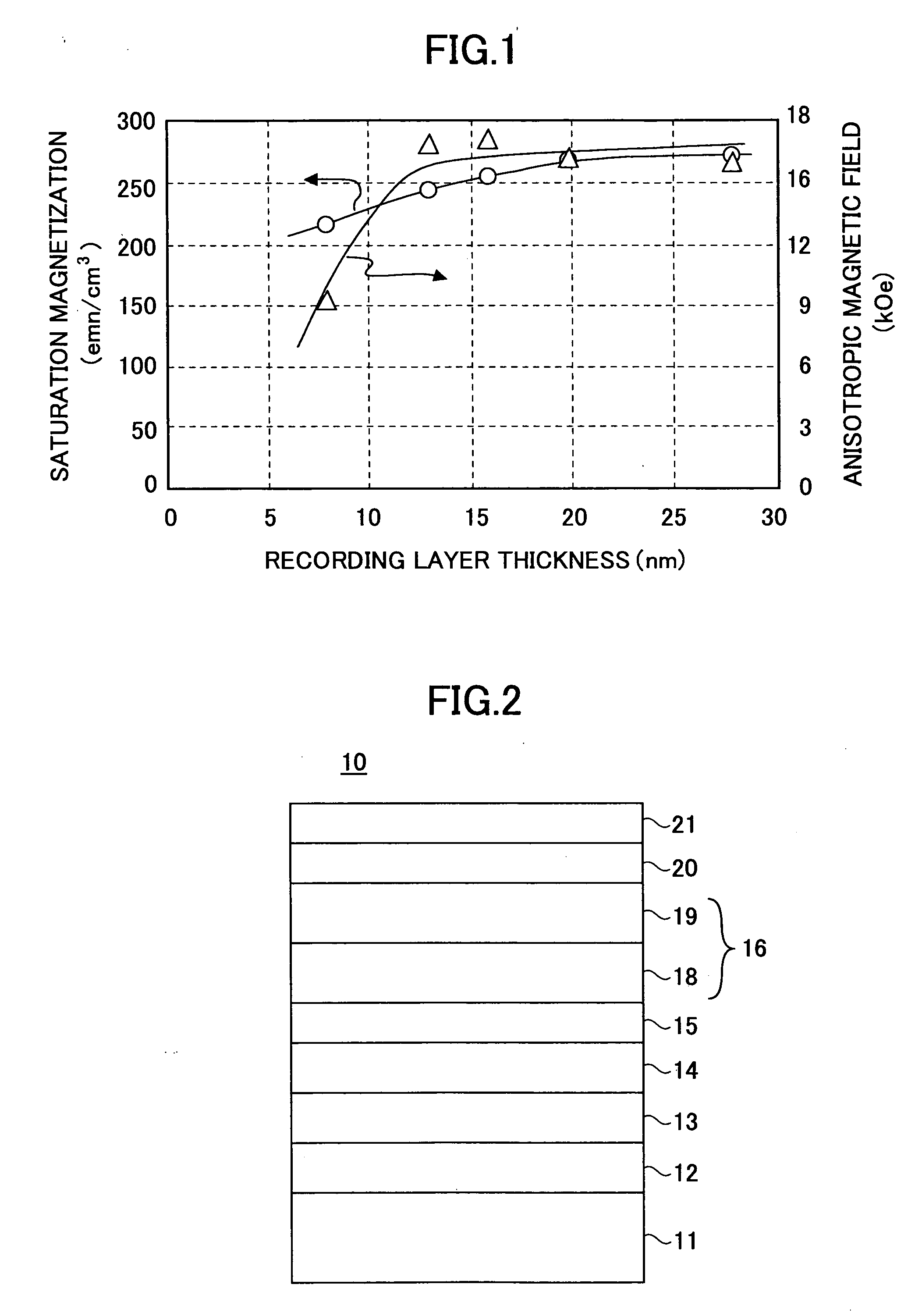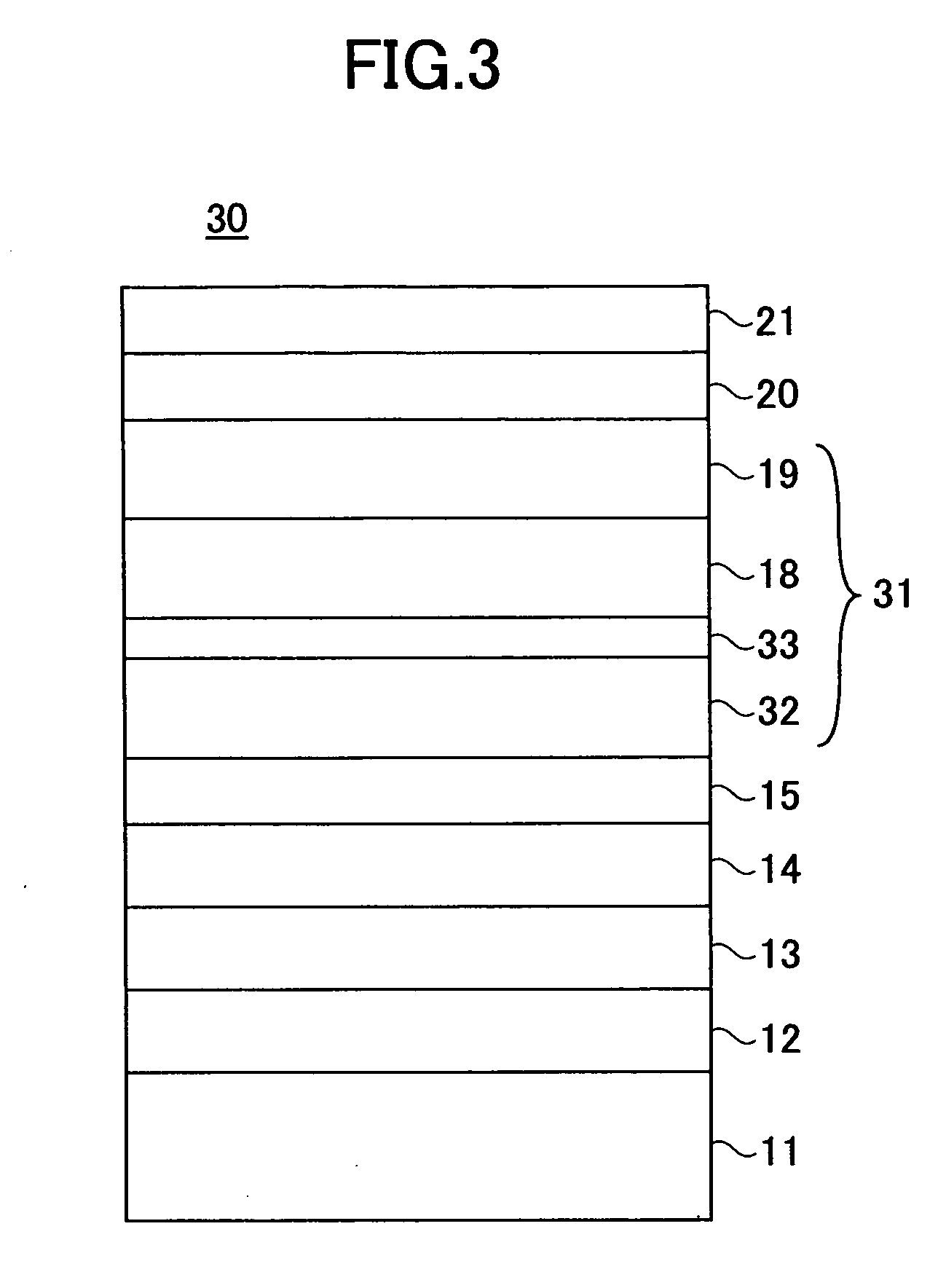Magnetic recording medium and magnetic storage unit
a recording medium and magnetic storage technology, applied in the field of magnetic recording media and magnetic storage units, can solve the problems of degrading the s/n ratio, reducing the coercive force, and reducing the thermal stability of the magnetization recorded in the recording layer
- Summary
- Abstract
- Description
- Claims
- Application Information
AI Technical Summary
Benefits of technology
Problems solved by technology
Method used
Image
Examples
first embodiment
[0033]FIG. 2 is a cross-sectional view of a magnetic recording medium 10 according to a first embodiment of the present invention.
[0034] Referring to FIG. 2, the magnetic recording medium 10 includes a substrate 11, a first seed layer 12, a second seed layer 13, a base layer 14, an intermediate layer 15, a recording layer 16, a protection film 20, and a lubrication layer 21. The first seed layer 12, the second seed layer 13, the base layer 14, the intermediate layer 15, the recording layer 16, the protection film 20, and the lubrication layer 21 are formed successively on the substrate 11. The recording layer 16 has a two-layer structure of a first magnetic layer 14 and a second magnetic layer 19 provided successively from the base layer 14 side.
[0035] There is no particular limitation to the material of the substrate 11. For instance, a glass substrate, a NiP-plated aluminum alloy substrate, a silicon substrate, a plastic substrate, a ceramic substrate, and a carbon substrate may...
example
[0079] An example magnetic disk was equal in configuration to the magnetic recording medium 10 according to the first embodiment illustrated in FIG. 2. The specifics of configuration are as follows:
[0080] Glass substrate (65 nm in diameter);
[0081] First seed layer: Cr50Ti50 film (25 nm);
[0082] Second seed layer: Al50Ru50 film (25 nm);
[0083] Base layer: Cr75Mo25 film (5 nm);
[0084] Intermediate layer: Co58Cr42 film (1 nm); First magnetic layer: Co65Cr11Pt11B13 film (10 nm);
[0085] Second magnetic layer: Co60Cr18Pt11B8Cu3 film (5 nm);
[0086] Protection film: amorphous carbon film (5 nm); and
[0087] Lubrication layer: AM3001 (1.5 nm), where the parenthesized numeric values represent thickness, and the numeric values of composition are expressed by atomic %.
[0088] The example magnetic disk was prepared as follows. First, a texture extending along a circumferential direction was formed on the surface of a glass substrate. Next, the surface of the glass substrate was cleaned, and the...
second embodiment
[0101]FIG. 8 is a plan view of part of a magnetic storage unit 60 according to a second embodiment of the present invention.
[0102] Referring to FIG. 8, the magnetic storage unit 60 includes a housing 61. Inside the housing 61, a hub 62 driven by a spindle (not graphically illustrated), a magnetic recording medium 63 fixed to the hub 62 and rotated, an actuator unit 64, an arm 65 and a suspension 66 attached to the actuator unit 64 and moved in the radial directions of the magnetic recording medium 63, and a magnetic head 68 supported by the suspension 66 are provided. The magnetic head 68 is formed of a composite head of a reproduction head of an MR element (magnetoresistive element), a GMR element (giant magnetoresistive element), or a TMR element (tunnel magnetoresistive element), and an induction-type recording head. The basic configuration itself of this magnetic storage unit 60 is well known, and a detailed description thereof is omitted in this specification.
[0103] The magne...
PUM
| Property | Measurement | Unit |
|---|---|---|
| thickness | aaaaa | aaaaa |
| thickness | aaaaa | aaaaa |
| thickness | aaaaa | aaaaa |
Abstract
Description
Claims
Application Information
 Login to View More
Login to View More - R&D
- Intellectual Property
- Life Sciences
- Materials
- Tech Scout
- Unparalleled Data Quality
- Higher Quality Content
- 60% Fewer Hallucinations
Browse by: Latest US Patents, China's latest patents, Technical Efficacy Thesaurus, Application Domain, Technology Topic, Popular Technical Reports.
© 2025 PatSnap. All rights reserved.Legal|Privacy policy|Modern Slavery Act Transparency Statement|Sitemap|About US| Contact US: help@patsnap.com



